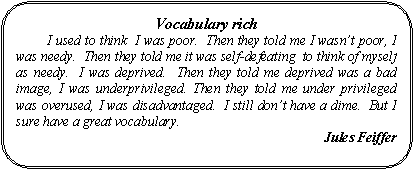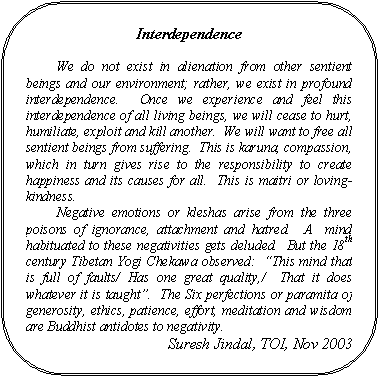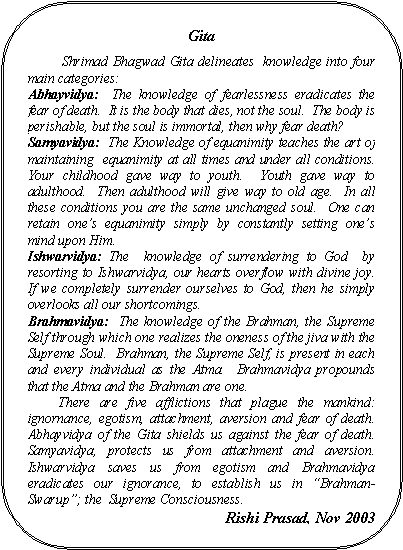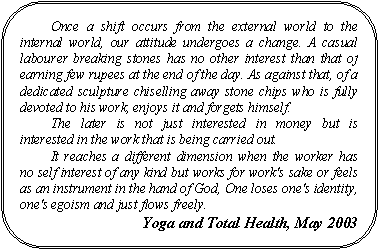|
|
||||||
Immune
– enhancing nutrients
reoperative
administration of an oral supplement containing immune enhancing
nutrients such as amino acids, omega-3 fatty acid and nucleotides
gives a boost to patient’s immune enhancing system that helps them to
fight off postoperative
infections so they spend less time in hospital. Amino acids: Following
stress such as major surgery, the
body is unable to synthesize sufficient
amino acids such as L-arginine.
L-arginine is known to
help promote nitrogen retention by the body and is important for wound
healing and boosting
the immune function. Omega-3 fatty acids:
Omega –3 fatty acids play an important role in
regulating the inflammatory
response to trauma. Adequate
levels are needed by the body to inhibit
the immunosuppresive and
inflammatory effects of omega-6
fatty acids such as arachidonic acid. Nucleotides: They
are usually synthesized by the body but an additional dietary source
appears to be necessary when the body is under metabolic stress.
During stressed states, dietary
nucleotides are thought to play a role in fighting infection by
stimulating the growth and replication of natural killer cells. Surgical
trauma increases levels of pro-inflammatory cytokines and lowers host
defense mechanisms. But
administration of oral IMPACT®
an enteral immune-enhancing drink, (supplemented with arginine, n-3
polyunsaturated fatty acids and ribonucleotides) is able to modulate the
immune and inflammatory reponses altered by surgical trauma, upregulating
gut microperfusion and oxygen metabolism. Randomised
trials have shown that preoperatively loading
elective surgery patients with immune-enhancing substrate in an
oral formula for 5 days and continuing therapy by jejunal infusion for 7
days after surgery results in significant reductions in postoperative
infections and length of hospital stay in patients undergoing
gastrointestinal surgery for cancer, with a subsequent significant
reduction of health care costs. August 2003, Medical Times
******* Genetically
modified technology
enetically
modified (GM) technology does not find favour with an overwhelming
majority of Britons, says the report in GM Nation?, the result of an
unprecedented public opinion exercise. While 91 percent respondents
thought GM could have negative environmental effects, 93 per cent felt GM
technology was driven by profit motive and not public interest.
In major image
makeover exercise, McDonald’s Corporation plans to market a healthier
meal, which is to come with an exercise booklet and a pedometer.
A new cross-national public opinion study has found the citizens of
US, France and Japan, some of the most industrialised nations in the
world, to be among the most misinformed about global warming. October 31, 2003 Down to Earth ******* Glittering
find
team
of chemists from China has made small diamonds
from carbondioxide. The team,
from the University of science and Technology of China, claims its method
could be cheaper and more efficient than
some existing methods of synthesizing diamonds.
The diamonds were made by making
carbon dioxide react with metallic sodium in a pressurised oven at 4400c
and 800 atmospheres. After 12
hours, grains of diamond were separated from sodium carbonate, graphite and
carbon dioxide.
August
31, 2003 Down to Earth ******* |
||||||
|
******* |
||||||
|
Eating
in between
ating more frequent meals may lead to reduce cholesterol
levels. Eating
smaller amounts more frequently may have important health benefits.
A recent study has
shown that levels of total cholesterol and low-density lipoprotein (LDL)
cholesterol were shown to decrease according to the frequency with which
meals were eaten. Other studies suggest that eating large meals after
long stretches without eating, leads to alterations in fat storage and
increases insulin peaks.
Eating
smaller amounts more frequently have a positive effect on the incidence
of cardiovascular disease. November 2003, Health Action ******** Tulsi
helps preserve cheese and meat
ulsi
(Basil) might one day become a weapon in the battle against dangerous
food bugs such as E coli and listeria.
A new plastic food wrapper for meat and cheese which slowly oozes
anti-microbial chemicals extracted from tulsi leaves has been shown to
increase the food’s shelf life. It
should also cut the risk of food poisoning.
It does not taint the food with tulsi flavour.
Preliminary tests on the new wrapping show that it keeps bacteria
at bay in meat and cheese for a week longer than ordinary packing. October 2003, Health Action ******** Microwave
cooking
ooking
by Microwave is the worst way to preserve a key nutrient in vegetables,
while steaming is the best,
according to Spanish study reported in the “New Scientist”.
Steaming the veggies left the antioxidants almost untouched, but
microwaving virtually eliminated. October 2003, TOI ******** Achilles’
heel of malaria parasite found
n
the battle against infectious diseases, has now discovered how to stop
the malaria parasite’s sugar transport protein from working. This
prevents the malaria parasite from growing and multiplying in the red
blood cells where it lives.
Malaria kills 3000 children every day and the parasite that
causes malaria is becoming harder to treat as it becomes resistant to
more and more drugs. Now
researchers have discovered a chink in the malaria parasite’s armour-
its sweet tooth. The malaria parasite needs sugar in the form of glucose to
grow and multiply in the red blood cells.
The parasite uses
what is known as a parasite-encoded facilitative hexose transporter (PtHT)
(a special transport protein) to absorb the glucose around it.
By introducing a new compound, the scientists stop the
parasite’s sugar transport protein from working.
Blocking this glucose uptake kills even drug-resistant strains of
the parasite. October
2003, Health Action
******** |
||||||
|
******** |
||||||
|
Live
and let live
acteria
have been genetically modified to act as drugs within human bodies. The
organisms are designed to treat inflammatory bowel disease by producing
a human immune protein that dampens inflammation.
GM bacteria are widely used to make foods and drugs; but the
prospects of drug-producing
gut bugs getting into the wrong people or swapping genes with other
bacteria has been the concern of many.
To address such fears, the bugs have now been altered so that
they die within days when discharged into the environment along with
faeces.
Steidler’s team
chose the Lactococcus lactis bacterium because tonnes of it are already
consumed in dairy products such as cheese.
But rather than simply adding an extra gene to the bacterium, a
gene producing human immune protein
(interleukin-10) was used to replace a key bacterial gene called
the thyA. This codes for the enzyme needed to make thymidine, one of
the building blocks of the bacterium’s DNA.
In the gut,
thymidine is released as food is digested; therefore the modified bugs
can flourish there even though they cannot make the enzyme.
But outside the gut, where there is little thymidine available,
the bacteria die. It is also highly unlikely that the bacterium will
acquire a copy of thyA from other bacteria, as the gene is found on the
main bacterial chromosome, rather than one of the smaller pieces of DNA
called plasmids that bacteria swap freely.
Patients take the
bacteria as a coated pill that protects the bugs in the stomach till it
breaks open and ejects its live cargo in the small intestine and colon.
But it remains to be seen if the treatment will work or not – there is
no way to control the distribution of the bacteria within the gut, or
how much interleukin-10 is produced, says Joel Weinstock of the US based
University of Iowa.
August 15, 2023 Down to Earth ******* Atkins
diet
he
increasing popularity of a high-fat, high-protein diet proposed by the
late nutrition guru, Robert Atkins is eating into a multinational
company Unilever’s profits. The Atkins diet allows people to gorge on
meat, cheese and fats but requires them to control their carbohydrates
intake. As a result Unilever’s SlimFast brand, with its range of
lowfat, food-replacement products such as milk shakes, pastas and soups,
is incurring losses for the company.
The Atkins formula has boosted sales of meat-based snacks, while
manufacturers of carbohydrate-rich
foods are reporting a fall in sales.
Unilever is the
third biggest multinational company dealing in food products holds
Atkins’ diet primarily responsible for its sliding fortunes.
Despite Atkins’ defiance of conventional knowledge about
weight-loss diets, people are turning to the diet since research has
proved its efficacy. August
31, 2003 Down to Earth ******* |
||||||
|
******* |
||||||
|
Nanowonder A Technological breakthrough
motor,
250 times smaller than human hair, has been created by the Lawrence
Berkely National Laboratory, USA. It
comprises a gold blade attached to an axle made from a carbon nanotube,
whose ends are anchored to two silicon dioxide electrodes.
Voltage flows through the electrodes and down the nanotube to
rotate the blade. Three
other electrodes provide additional voltage control, so that the speed
of the blade, its direction and position can be governed precisely.
The motor can tolerate wider temperature ranges, operate in a
vaccum and cope with harsher chemical environments than its ‘bio’
equivalents. It will help develop the much-needed miniaturised devices
required for fields like medicine. August 31, 2003 Down to Earth ******* Eye-opener
earing
a tight necktie can increase the chances of developing glaucoma, a
serious eye disease. “A
tight necktie raises blood pressure in the eye, which is leading risk
factor in the illness that can lead to damage to the optic nerve and
loss of vision,” says Robert Ritch of the New York Eye and Ear
Infirmary in the US. August 31, 2003 Down to Earth ******* |
||||||
|
Cola
headache
esults
of five-year study suggest that children who drink too much cola may
experience caffeine-induced headaches on daily basis. Soft drinks
account for more than half of the caffeine intake, according to a US
study. A high caffeine intake may also rob children of much-needed
sleep. August 2003, Health Action ******* Novel
antisense antimicrobial drugs
here
is increasing concern over the appearance of drug resistant
microorganisms. Novel therapeutic agents are required to develop new
approaches to deal with life threatening infections that resist
conventional treatments. For
protecting invention of novel antisense antimicrobial drugs USPTO has
allowed a patent on May
13, 2003 as was announced by Lorus Therapeutics Inc (Lorus). Recently, a
patent allowed in Canada and announced on April 19, 2003, provides
protection in North America for an antisense antimicrobial discovery
program. Lorus,
founded in 1986, is building a portfolio of promising anticancer drugs.
Lorus technology on design and use of
unique antisense and antimicrobial agents that target’ specific
gene sequencing, is being protected under the patent titled “Antisense
oligonucleotide sequences as inhibitors of microorganisms”. This
patent allowed by United States Patent Office covers the gene targets,
SecA and Ribonucleotide reductase (RNR) which are necessary for growth
and viability of microorganisms. SecA is an important component of a
process required for secretion of bacterial proteins, which is an
essential event in the life cycle of pathogenic organisms. RNR is a
central enzyme in the formation of components required for DNA synthesis
and proliferation. Since the functions of these gene products are needed
for survival, they are ideal targets for drug development strategies. October
2003, Wista IPR
******* Negative
calorie foods
egative calorie foods
are foods, which use more calories to digest than the calories the foods
actually contain! Calories from these foods are much harder for the body to
break down and process. In
other words, the body has to work harder in order to extract calories
from these foods. This
gives these foods a tremendous natural fat-burning advantage. A
piece of dessert may consist of 400 calories but it may require only 150
calories to be digested by our body, resulting in a net gain of 250
calories which is added to our body fat!
According to this theory, for example, if you eat 100 calories of
a food that requires 150 calories to digest, then you’ve burnt an
additional 50 calories simply by eating that food.
Typically, a 25 calorie piece of broccoli (100g) requires 80
calories to digest, resulting in a net loss of 55 calories from the body
fat! Thus, the more you
eat, the more you lose weight. These
foods are natural plant foods with high carbohydrates and fibres and
very less fat. It is very
difficult for our body to break carbohydrates and convert into fat
needing much effort, whereas the fatty foods are added very easily to
our body fat. Moreover, the fibres present in these plant foods very useful
for our body, they are filling, and good for controlling cholesterol
high blood pressure (hypertension), and avoiding cancer. November
2003, Health Action
******* |
||||||
|
******* |
||||||
Chilli peppers
apsaicin, the hot chemical found in chilli peppers. This is now being widely tested as a potential painkiller. For years people have put hot pepper extract on their gums to alleviate toothache. Now it is known that capsaicin in peppers serves as a local anesthetic and a promising new painkiller . Capsaicin suppresses pain by draining nerve cells of something called substance P, which relays pain sensations to the central nervous system. Thus, Capsaicin helps block the perception of pain. Recently, the hot pepper essence has been injected or made in medications to help several diseases characterised by pain. June 2003, Nisargopchar Varta******* |
||||||
|
Vagus
nerve stimulation for obesity
yberonics
Inc headquartered in Houston, Texas has been assigned
royalty free rights to United States
Patent “ US6,587,713 B1” issued on July 1, 2023 covering method for
treatment of obesity by Bilateral Vagus Nerve Stimulation. Method patent
provides Cyberonics exclusive right to manufacture or sell a product in
the United States which applied pulsed electrical signals to vagus,
hypoglossal or trigeminal nerve for the treatment of variety of chronic
disorders. Vagus
nerve stimulation (VNS) is delivered by the VNS Therapy System, an
implantable generator similar to cardiac pacemaker. VNS Therapy System
delivers a programmed intermitent mild electrical pulses to the vagus
nerve 24 hours/day. The company’s initial market was epilepsy and it
was approved by the FDA in 1997 for use as an adjunctive therapy in
reducing the frequency of seizures in adults and adolescents refractory
to antiepileptic medications. VNS is under investigation for treatment
of depression, anxiety, Alzhimer’s disease and chronic headache/
migraine. To date 22000 epilepsy patients in 24 countries are using VNS
therapy. October
2003, Wista IPR ******* |
||||||
|
******* |
||||||
|
Bitter
is better
ccording
to the findings of a recent
research, women who incorporate bitter veggies in their diet lead a
healthier life than others. The
Yale University of Medicine has studied the phenomenon and states that
dark-green bitter veggies contain vitamins, minerals, fiber, and healthy
carbohydrates. They’re also abundant in plant chemicals as beta-carotene
that causes the body to produce enzymes to ward off cancer-causing
agents. So there’s
necessity to shrug away from bitterness.
Add a few drops of lemon or add some grains of sugar to counter
the bitterness. September 2003, Health Action ******* PQQ,
first vitamin found in 55 years?
yrroloquinoline
quinone (PQQ), thus qualifying it to be the first Vitamin to be
discovered in the last 55 years. The
last vitamin discovered was cyanocobalamin(also known as B12).
PQQ was isolated from a
bacterium in 1979 by researchers from the Texas University, USA.
But scientists did not know it was connected with which enzyme,
preventing PQQ from being considered as a vitamin. Vitamins are organic substances essential for good health and growth. They must be ingested through food or vitamin pills because human body is unable to make them. The exception is vitamin D, which our bodies produce when exposed to sunlight. Takaoki Kasahara and Tadafumi Kato from the Brain Science Institute, Japan, reported that they have found a gene that encodes for a PQQ binding enzyme for the first time in any mammal. Also, they established that PQQ is vital for the metabolism of lysine, an essential amino acid. PQQ plays a vital role in oxidation-reduction reactions associated with energy transfer in cells. Since the molecular nature and function of PQQ are quite similar to many others in the vitamin B group, it should be considered as a member of the vitamin B family. At present there are eight vitamins in the B group.
August
31, 2003 Down to Earth
******* |
||||||
|
******* |
||||||
|
Anti
dose
ives
of many could be at stake, with pharmaceutical giants shying away from
the development of new
antibiotics. Prominent
experts allege that many companies, such as Roche and Eli Lilly,
are just concentrating on the treatments of chronic illnesses. The
change is quite untimely – Resistance
to antibiotics is growing; 20 per cent of infections in the US hospitals
involve multidrug-resistant bacteria, reports the US Food and drug
Administration. It is but
natural for bacteria and viruses to become resistant to antibiotics, but
this makes the ‘wonder drugs’ less profitable in the long run;
unlike medicines for chronic illnesses, antibiotics are used for a small
duration. October
31, 2003 Down to Earth ******* Mirror,
mirror, on the wall...
ccording
to Transparency international’s first Global Corruption Barometer,
politicians were believed to be the most corrupt in three-fourth of the
countries, and by almost 30 percent of the people, surveyed – most
notably in Argentina and Japan.
Next to wily
politicians in corruption’s hall of fame came the courts and the
police, being given this dubious distinction by 13.7 and 11.5
percent of those surveyed. Close behind came medical services and
education.
In 33 countries, the
public said they would most like to remove corruption from political
parties, with more than half the respondents in Argentina and Japan
saying so. The courts were
blamed the most in Peru and Indonesia, followed by police, who were held
responsible for corruption by one-third of the people in Hong kong,
Malaysia, Mexico and Nigeria. In Bosnia and Herzegovina, Croatia,
Georgia and Poland, one fifth of the
respondents selected medical services.
“The people
of the world are sending a clear message to political leaders: they have
to rebuild the trust of ordinary people.”
As for the general optimism level, Colombians and Indonesians are
the most hopeful that corruption
will decrease in their countries, while a majority of
Indians, Turks and South Africans expected corruption to rise. August 15, 2003 Down to Earth
******* Groundnuts
for a healthy heart
ating groundnuts helps keep heart healthy without weight gain. Peanuts are a rich source of monosaturated fatty acids, Magnesium and folate, vitamin E, copper, arginine, and fiber, all of which have properties of reducing heart disease risk. Peanuts which are actually legumes, are often viewed as unhealthy because they are high in fat. But peanuts are rich in types of fats that actually reduce heart disease risk and a person feels full after eating peanuts – so they do not pose a threat to weight gain. October 2003, Health Action ******* Too
much brushing bad
rushing
your teeth may be damaging your health, according to a group of British
researches. Poor technique,
excessive force and too much time spent in front of the mirror can all
lead to gum disease and tooth decay.
People should spend two minutes twice a day brushing with a
pressure equivalent to holding an orange.
“People who brush their teeth for longer and harder than is
necessary may not be making them any cleaner, and could be causing
permanent damage.” August
2003, Health Action |
||||||
|
******* |
||||||
|
SUGAR
a white poison
efore
2500 years fruits and honey were the only sweet substances available.
Manufacturing sugar and jaggery from the sugarcane juice was
originally started by the Indians. The
consumption of huge amount of white sugar has led to many untoward
effects. The Americans suffer
from dental caries at the early age of eighteen years.
They spend about 4000 crores of rupees per year for dental
treatment. In Great Britain,
40 lakh are extracted per year. A
British child loses atleast one tooth at 16, in Scotland decaying of teeth
starts from the tender age of ten.
It is seen that boys are more fond of sweets than girls.
Children between the age group of 15 to 19 like sweetmeats and
confectionaries to great extent. A British child ingests half a pound of sugar per week only
through the sweets and the toffees. It
is said that a 15 year old child from England had to lose all his teeth
and use an artificial denture. The
boy used to consume 350 pounds of sugar per year.
Sugar not only affects the teeth but also leads to diseases of
hearts, kidneys, skin and some digestive disorders.
Sugar has no role as a
nutrient. It is used only for
pleasing the sense or taste and for welcoming visitor and the beloved
ones. Professor John Yudkin
from England has minutely studied the properties of sugar.
He has named it as a white poison.
He states that there is no physiological requirement for sugar.
The calories and energy required for the body are easily available
from fruits, vegetables and grains.
Many people think that
sugar is an instantaneous source of energy. But there is a lot of
difference between sugar and sweetness.
The sweet taste of fruits is due to the fructose and glucose
present in them, which are the instant sources of energy.
But the sweetness of white sugar is because of the sucrose present
in it, which has to undergo the process of digestion before getting absorbed in the blood stream and act as an energy giving
substance. The same is the
case as regards to the lactose from milk and maltose from grains.
They also need digestion before getting absorbed.
Extra calories do not give extra strength to human body.
They just make a person obese and prone to many diseases instead.
Hence, the additional calories from white sugar is totally unwanted
for the body.
Sugar contains no vitamins,
minerals or nutrients, it is just calories, and sweetness.
A doctor from Japan has concluded from a broad survey of sugar
eaters that the white sugar is directly related to heart disease. After survey of 20 countries Negroes from South Africa never
used sugar. Cardiac disease
were totally absent in those people.
Sugar also increase cholesterol level and reduces the elasticity of
the blood vessels. Hypoglycemia
(low blood sugar) is a common sequel of the excessive consumption of sugar
these days. It is commonly
seen in Americans and Europeans. White
sugar often causes indigestion. The
acids produced during its digestion irritate the mucosal lining of the
stomach and the intestines. All the sweets produce 20% extra acidity in
the stomach, which is harmful for the teeth.
Acids are also formed locally by the bacterial flourishing in the
remnants of sweets in the mouth and on the teeth. Sugar is also the main
cause of dermatitis. Hence,
the children eating excess of sweet are prone to dental decay and skin
diseases. Tyramine present in
chocolates can cause migraine and headache.
The sugar from chocolates also has the same effect.
Hence chocolates are supposed to lead to the attack of migraine.
Very few know that
cigarettes contain sugar which can render the smoker prone to diabetes and
heart disease. Even if the
percentage of nicotine in the cigarette is reduced, the sugar therein
continues to cause harm to the body and leads to cardio-pulmonary disease. Due to sweetness of the cigarettes, more and more people
tempted to smoking. The sugar
from cigarettes renders their smoke more acidic which is very harmful to
the lungs. The flucord
tobacco used in cigarettes contains 17% sugar, imported cigarettes from
renowed manufacturers also contain 15% sugar.
A
huge amount of sugar is unnecessarily consumed through various foods, such
as biscuits, confectionery, bottled drinks, canned fruits, ice-cream and
sweetmeats. One
must try at least to reduce, if not totally discard sugar from the diet,
because the excessive consumption of sugar make one fall prey to various
diseases. Honey and organic Jaggery should be substituted for sugar
whenever possible. July 2003, Nisargopchar Varta ******* Costless
laughter therapy
aughter
is more of a supplementary and preventive therapy. Anti
Stress: Laughter is one of the finest,
most economical and easy to practice anti-stress measures.
Laughter is one of the best muscle relaxant. Laughter expands blood vessels and sends more blood rising to
the extremities and other muscles all over the body. A good bout of laughter also reduces the levels of stress
hormones epineprine and cortisol. It
can be said to be a form of dynamic meditation or relaxation. Laughter is
the easiest form of meditation, which brings you instant relaxation. Strengthens
the Immune System: It has been proved by
psychoneuroimmunologists that all negative emotions like anxiety,
depression or anger weaken the immune
system of the body, thereby reducing its fighting capacity against
infections. Laughter
helps to increase the count of natural killer cells (NK cells – a type
of white cells) and also raises the antibody levels.
Researches have found that after laughter therapy there is an
increase in antibodies (Immunoglobulin A) in the mucous on of the nose and
respiratory passages, which is believed to have protective capacity
against some viruses, bacteria and other microorganisms Best
Aerobic Exercise: The one benefit almost
everybody derives is a sense of wellbeing.
After 15 minutes of laughter in the morning, they feel fresh
throughout the day. Depression,
Anxiety and Psychosomatic Disorders: Laughter
has benefited many people who were on heavy anti depressant pills and
tranquillizers. High Blood Pressure And Heart Disease: Laughter definitely helps to control blood pressure by reducing the release of stress related hormones and bringing relaxation. If you are high risk of developing heart disease, laughter could be the best preventive medicine. Laughter improves the blood circulation and oxygen supply to the heart muscles. Natural
Pain Killer: Laughter increases the
levels of endrophins in our bodies which are natural pain killers. It help
in reducing the intensity of pain in those suffering from
arthritis, spondylitis and muscular spasms of the body. Internal
Jogging: Laughing
provides a good message to all internal organs and increases their
efficiency. Alleviates
Bronchitis and Asthma: Laughter is one of
the best exercises for those suffering from asthma and bronchitis. It improves the lung capacity and oxygen levels in the blood. Makes
you look younger: Laughter is an
excellent exercise for your facial muscles.
It tones up the muscles of the face and improves facial
expressions. Laughter
exercises the abdominal muscles and helps to improve muscle tone of those
with pot bellies.
Dr. Madan Kataria July 2003, Health Guide
******* |
||||||
|
******* |
||||||
BACK |







